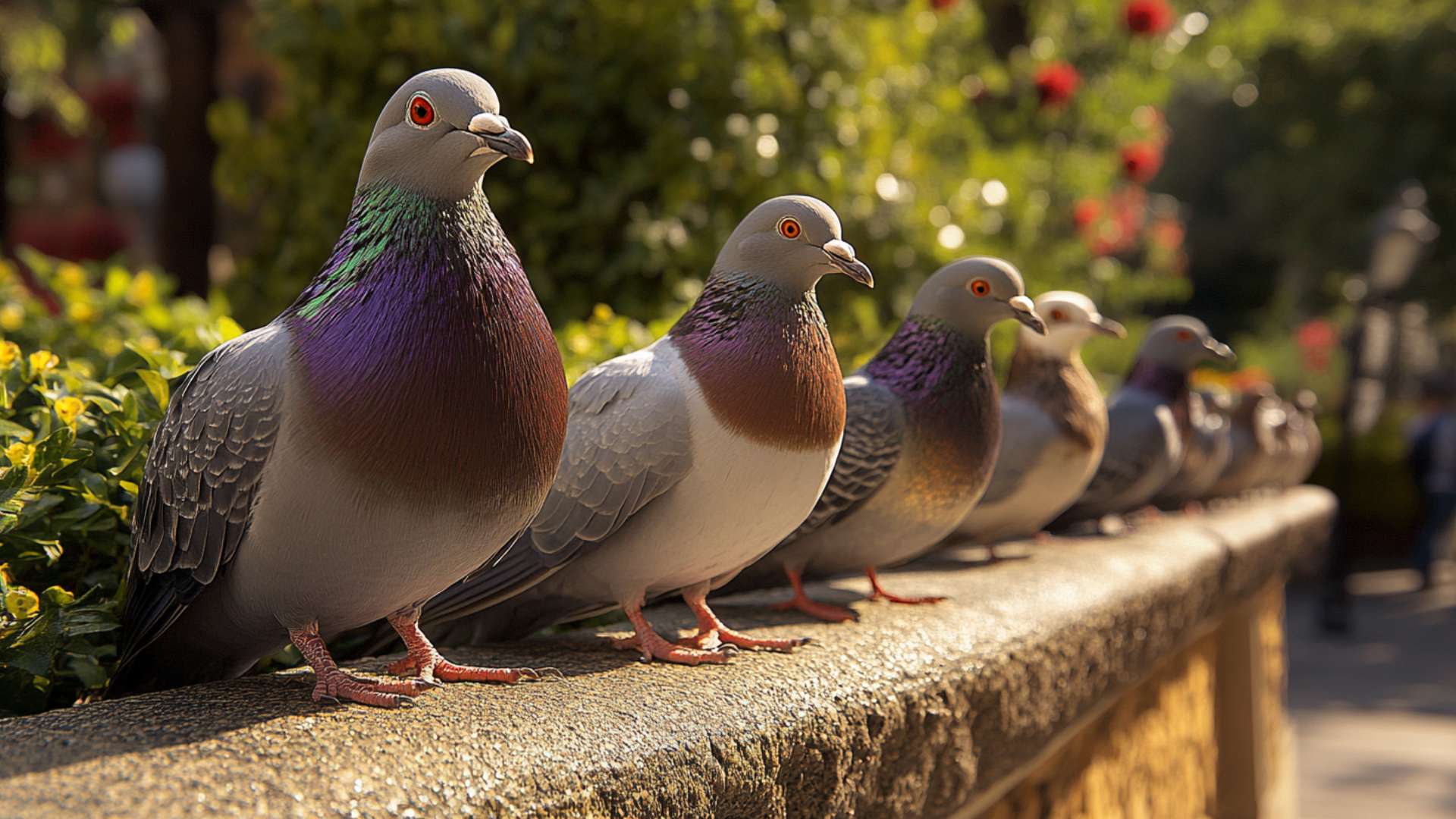When we think of birds, pigeons are often the first that come to mind. These ubiquitous creatures can be found in nearly every city and town, perched on statues or bustling around parks. Pigeons, scientifically known as Columba livia, are a common sight across the globe.
With their distinctive cooing and ability to adapt to a wide range of environments, they suspect pigeons have become an integral part of our urban landscapes. In this article, we delve into an intriguing question: Can pigeons survive cold weather?
While we often associate birds with warmer climates or migrating south for the winter, pigeons have proven themselves remarkably resilient in the face of freezing temperatures and harsh conditions. Join us as we explore the fascinating world of these feathered inhabitants and uncover their secrets to thriving even during chilly spells.
Brief Overview of Pigeons as a Common Bird Species
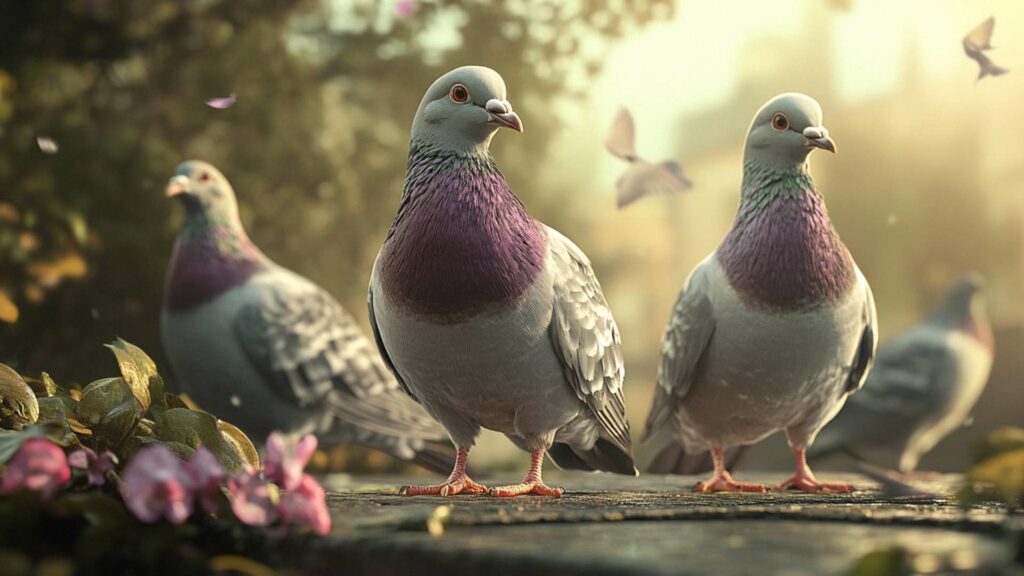
Pigeons have a long history of cohabitating with humans. Originating from rock doves that nested on cliffs and ledges thousands of years ago, they were domesticated by ancient civilizations for various purposes such as message delivery and food sources. Today, they are found in urban areas worldwide due to their adaptability and ability to find sustenance amidst human habitation.
Their characteristic plump bodies are covered in feathers that vary in color depending on breed – ranging from gray and white to more exotic hues like iridescent greens or purples. Pigeons possess remarkable navigation skills and can traverse great distances when necessary – whether it is for finding food or returning to their nests after venturing out during the day.
Mention of the Topic: Can Pigeons Survive Cold Weather?
Now let’s address the big question: Can pigeons survive cold weather? Many people assume that these city-dwelling birds would struggle in freezing temperatures and harsh winter seasons. However, pigeons have developed a range of adaptations that enable them to endure and even thrive in cold climates.
In the sections to follow, we will explore how pigeons utilize their feather plumage and behavioral strategies to regulate body temperature, their migration patterns, and winter survival strategies, as well as tips for helping them during the colder months. Prepare to be amazed by the resilience of these remarkable avian creatures as we uncover the truth behind their ability to withstand and conquer cold weather challenges.
Pigeon Adaptations to Cold Weather

Feather Insulation and Plumage Variations in Different Pigeon Breeds
When it comes to surviving the chilly temperatures, pigeons have some remarkable adaptations that help them brave the cold. One of these adaptations is their feather insulation.
Pigeons possess a dense plumage that acts as a natural insulation layer, protecting them from the harsh elements. Their feathers create countless tiny air pockets that act as insulators, keeping their bodies warm even in frigid conditions.
Interestingly, different pigeon breeds may have variations in their plumage structure and density, which allows them to adapt to specific climates and temperature ranges. Some pigeon breeds undergo physiological changes during colder months, where they develop thicker feathers or additional downy underlayers for enhanced insulation.
These adaptations not only help retain body heat but also provide excellent protection against wind chill factors. So, when you spot those pigeons puffed up on a chilly day, don’t mistake it for discomfort; they are just maximizing their feather insulation!
Pigeon’s Ability to Regulate Body Temperature through Fluffing Feathers
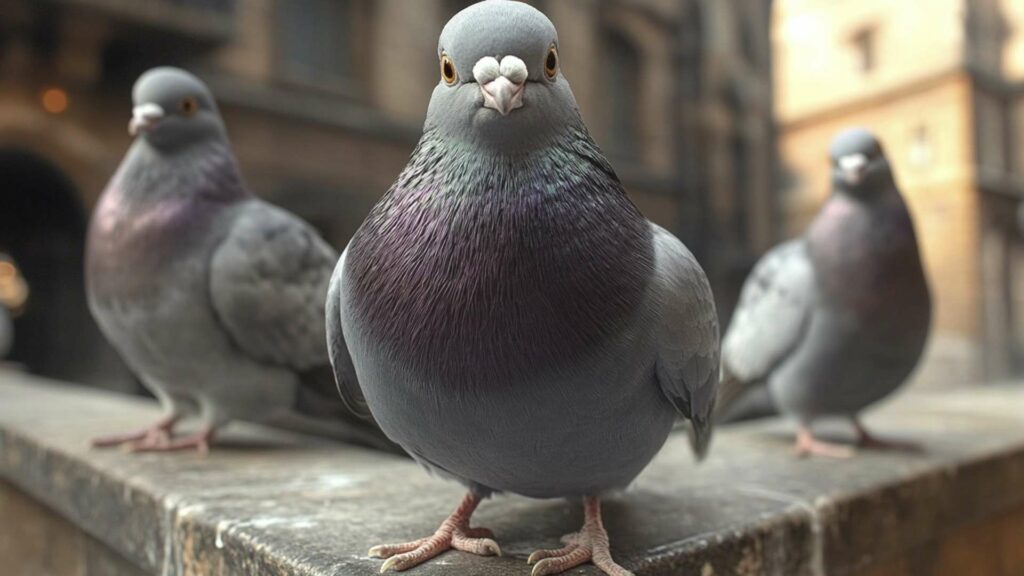
Another fascinating adaptation that helps pigeons survive cold weather is their ability to regulate body temperature through fluffing their feathers. When pigeons feel cold or need extra warmth, they instinctively fluff up their feathers by puffing out air into the spaces between the feathers.
This fluffed-up appearance is not just cute; it actually serves a purpose! By trapping more air within their plumage layers, pigeons create an extra layer of insulation which keeps them several degrees warmer than the surrounding environment.
Fluffing up also helps prevent heat loss by reducing the surface area exposed to cold temperatures and wind chill. This behavioral adaptation allows them to conserve body heat effectively and maintain a comfortable overall body temperature even in challenging weather conditions.
Behavioral Adaptations like Roosting in Warm Areas and Huddling Together

Pigeons are intelligent and adaptable creatures, and they have developed various behavioral adaptations to cope with the cold. One of these behaviors is roosting in warm areas.
During cold spells, pigeons seek out places that provide some form of warmth. You might find them perched near heat-generating sources like vents or even cuddled up on a sunny windowsill.
These strategic choices allow birds prefer them to soak up warmth whenever possible. Moreover, pigeons display another heartwarming behavior: huddling together for warmth.
Many pigeons will gather in groups, often called a “flock” or a “kit,” which serves multiple purposes, including conserving body heat. When they huddle close to each other, their collective body heat helps keep everyone warm.
This social behavior shows their remarkable adaptability and their understanding that staying together is advantageous when it comes to surviving the cold. So next time you see a group of pigeons huddled together on a chilly day, remember that they are not just socializing; they are actively using teamwork to combat the cold!
Physiological Responses to Cold Weather
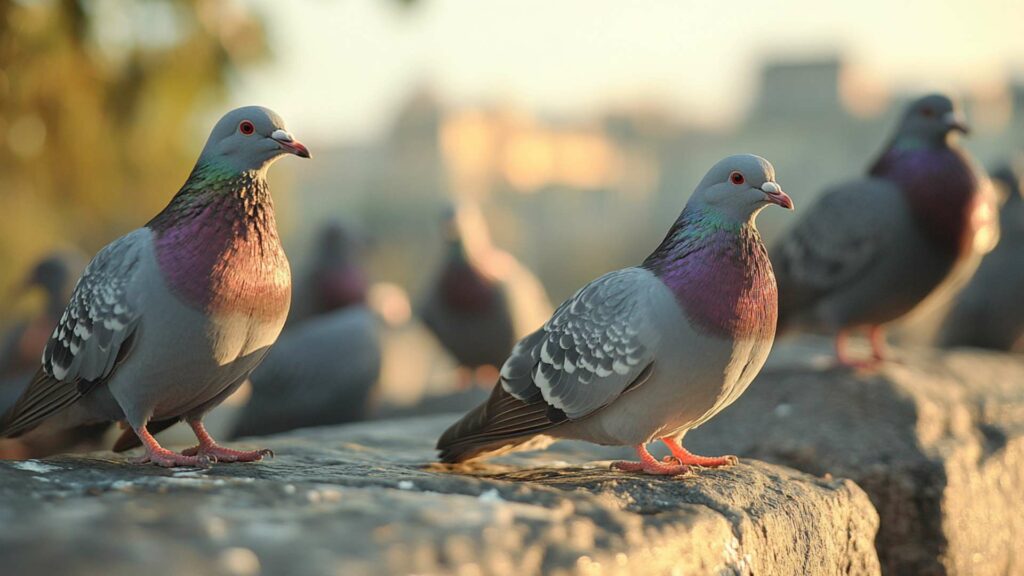
Increased Metabolic Rate: The Inner Furnace
When the chilly winds of winter sweep through, pigeons undergo remarkable physiological adaptations to keep their bodies warm. One of their key responses is an increased metabolic rate, transforming them into little feathered furnaces.
Their metabolism ramps up, burning more calories and generating extra body heat to combat the cold. This heightened metabolic activity ensures that these resilient birds maintain a core temperature essential for survival in frosty conditions.
To achieve this elevated metabolic rate, pigeons rely on their efficient digestive system. They extract vital nutrients from the food they consume and convert it into energy at an accelerated pace.
By feasting on nourishing seeds and berries found in their surroundings, they fuel their inner furnace with sustainable warmth. So, next time you spot a flock of pigeons pecking away at scattered crumbs or foraging in urban parks during winter, marvel at how they utilize food as a source of body heat.
Shivering: The Pigeon’s Heat Generator
When confronted with extreme cold conditions that challenge even the hardiest of creatures, pigeons resort to a clever mechanism known as shivering to generate additional heat. Just like humans shiver when we feel cold, these resilient birds employ the same strategy to stay warm amidst plummeting temperatures. Shivering is a rapid muscular contraction and relaxation process that generates heat by expending energy stored within the pigeon’s body.
By trembling involuntarily, small muscle contractions generate warmth throughout their bodies and produce body heat. These vibrations create friction within muscle fibers, which efficiently converts energy into heat production.
It’s fascinating how nature equips these resourceful birds with an innate ability to adapt and utilize mechanisms like shivering as nature’s own central heating system. So next time you witness those familiar jerky movements observed in chilly weather—observe closely, for it’s not just a sign of the cold but a testament to the pigeon’s remarkable ability to brave the elements.
Remember, pigeons possess an array of strategies to cope with extremely cold weather too. Their increased metabolic rate and shivering prowess work together in harmony as a dynamic duo against freezing temperatures.
Pigeon Migration Patterns and Winter Survival Strategies
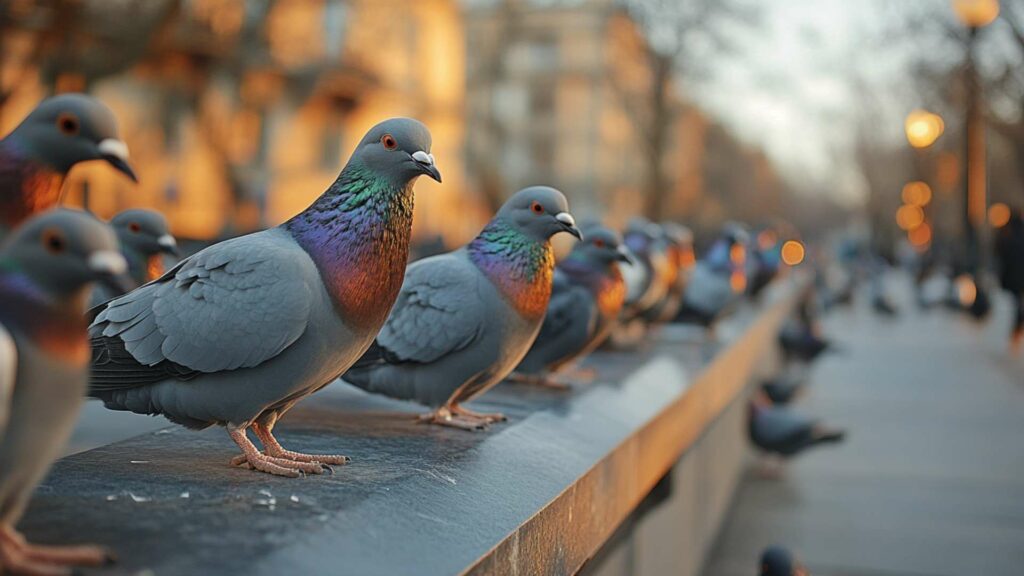
Overview of pigeon migration habits during winter months
During the winter months, pigeons exhibit fascinating migration patterns as they seek out warmer climates and better access to food and shelter. Unlike some other birds that migrate long distances, pigeons tend to have shorter migration routes. They are known to move from colder regions to milder areas where their chances of survival increase.
These migratory movements feed pigeons are influenced by factors such as temperature changes, food availability, and the need for suitable roosting sites. Pigeons have a remarkable ability to navigate using various cues such as the Earth’s magnetic field, landmarks, and even the position of the sun.
Their internal compass guides them towards more hospitable regions where they can find adequate resources to survive. Although not all pigeons migrate during winter, many do undertake these journeys in search of better conditions.
How pigeons find suitable habitats with access to food and shelter

When searching for suitable habitats during winter, pigeons look for areas that provide both food and shelter. They prefer locations with sturdy tree trunks or buildings where they can roost safely away from harsh weather elements. Pigeons often form large colonies in urban areas due to the abundance of potential nesting sites provided by buildings and bridges.
Food availability is crucial for pigeons’ survival during cold weather months. These resourceful birds adapt their diet according to what is naturally available or provided by humans in urban environments.
Pigeons eat a variety of seeds, grains, berries, fruits, and even small insects when necessary. In urban settings, they are known for scavenging human leftovers or finding sustenance near compost bins or outdoor dining areas.
To build their nests in preparation for breeding season (which typically occurs in spring when temperatures increase), adult pigeons actively search for nesting materials during winter months. They are naturally attracted to materials like twigs, leaves, and even bits of trash such as small pieces of fabric or string.
These materials help them construct cozy nests in protected locations, ensuring that their eggs and offspring stay warm during the colder months. Pigeons employ remarkable migratory patterns during winter to find more favorable conditions for survival.
They rely on their innate navigation abilities to redirect themselves towards warmer climates and habitats that offer abundant food sources and suitable roosting sites. By adapting their diet and actively seeking nesting materials, these resilient birds endure the challenges of cold weather while thriving in various environments.
Food Sources for Pigeons in Winter
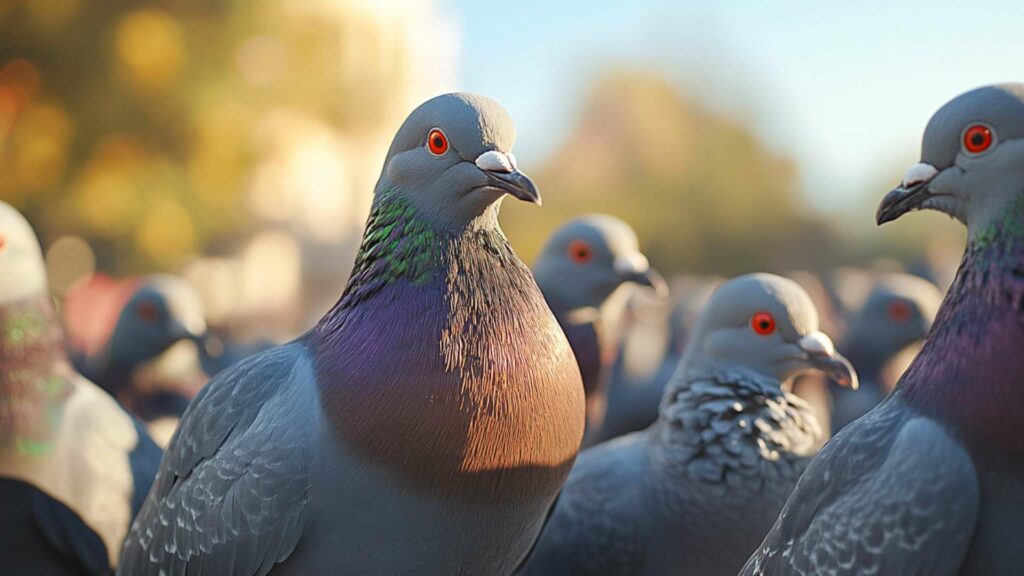
Natural food availability during colder months (berries, seeds, etc.)
During the chilly winter months, when the landscape is blanketed in white and temperatures drop to freezing, pigeons face a challenge finding their usual food sources. However, these resourceful birds have adapted to make the most of what nature provides. In urban environments where trees and shrubs still bear fruits, pigeons can feast on berries that have survived the cold nights.
They are also skilled at finding hidden seeds tucked away from prying eyes. Pigeons use their sharp eyesight to spot these tiny morsels even amidst thick layers of snow.
Moreover, when natural food becomes scarce during freezing temperatures, pigeons rely on other survival strategies. They may seek out areas with dense vegetation that shelter hardy plants capable of providing sustenance throughout winter.
This allows them to find seeds that have fallen or remained intact within seed heads despite the chill. Their ability to navigate such habitats ensures they can sustain themselves until more abundant food sources become available with the arrival of spring.
Human-provided food sources like bird feeders and handouts
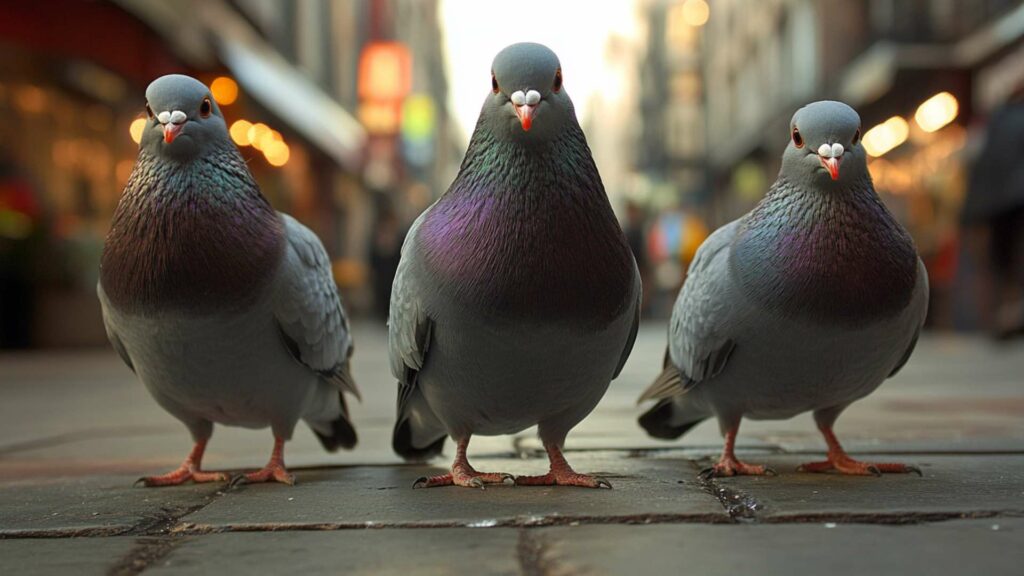
Pigeons have long discovered that humans can be a source of nourishment during winters as well. Many compassionate individuals set up bird feeders specifically designed for our feathered friends and baby pigeons’ needs. These feeders are usually filled with a mix of grains and seeds that provide essential nutrients pigeons require for energy and warmth during cold spells.
Apart from bird feeders, some people voluntarily offer handouts directly to pigeons in city parks or open spaces. While opinions vary on this practice due to concerns about overreliance or health risks associated with feeding large flocks, it cannot be denied that these gestures provide immediate sustenance for hungry birds struggling to find enough nourishment in harsh conditions.
To support the survival of pigeons, it is important to ensure that the food provided is appropriate for their dietary needs. Opting for a balanced mix of seeds, grains, and nuts can help meet their nutritional requirements while ensuring they can withstand the freezing temperatures.
Both natural and human-provided food sources play crucial roles in helping pigeons thrive and endure cold winters. The resourcefulness of these birds allows them to adapt and seek out berries, seeds, and other edible substances present in their environment.
Additionally, when faced with scarcity, pigeons have learned to rely on handouts from kind-hearted humans who provide supplemental food through feeders or direct assistance. By understanding the dietary requirements of pigeons and supporting them during colder months, we can contribute to their survival and well-being.
Specific Challenges Faced by Pigeons in Cold Weather
Extreme cold temperatures and frostbite risks on exposed body parts
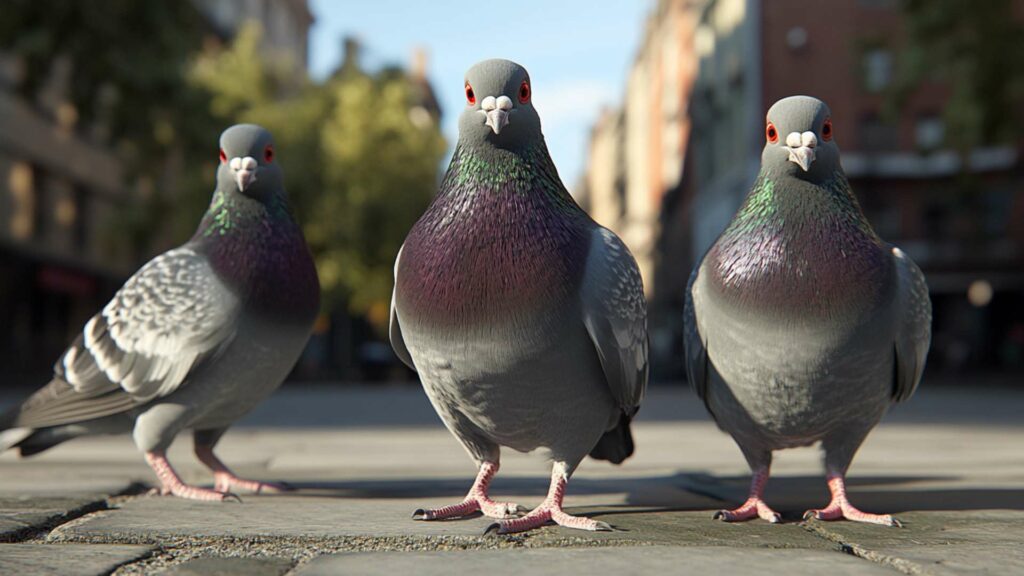
The chilly winter months can pose significant challenges for pigeons as they brave the biting cold temperatures. Just like humans, pigeons feel cold too, and their bodies need to work hard to maintain a stable and healthy body temperature.
However, with freezing temperatures, certain body parts of pigeons are at risk of frostbite. Their exposed extremities such as feet, legs, beaks, and wattles are particularly vulnerable to the harsh cold.
To combat this challenge, pigeons have an incredible adaptation called countercurrent blood flow. It helps regulate blood circulation in their extremities by minimizing heat loss.
The arteries that carry warm blood from the heart run alongside veins carrying colder blood back to the heart. This allows for heat exchange between the two vessels in a way that conserves heat and keeps vital organs warm while minimizing the risk of frostbite on the outer areas.
Ice formation on water sources affecting hydration
Another challenge that pigeons face during winter is finding clean water sources for hydration. With freezing temperatures, water bodies often turn into ice traps, making it difficult for birds to access water naturally attracted to them.
This poses a serious threat as dehydration can set in quickly. To overcome this hurdle, it’s essential for humans who care about these feathered friends to provide unfrozen water sources for them during winter.
Heated birdbaths or simple strategies like placing warm rocks or objects (carefully monitored) in shallow dishes of fresh water can help prevent ice formation and provide much-needed hydration for thirsty pigeons. Investing time and effort into addressing these challenges will ensure that our pigeon friends can prosper even in freezing conditions.
By understanding their specific needs during colder months and taking steps to support them effectively, we can help these resilient birds maintain their well-being and thrive throughout the winter season. Remember, pigeons are remarkable survivors, and with a little extra care and consideration, we can help them brave the cold and continue to grace our lives with their presence.
Pigeon Winter Survival Stories from Around the World
Examples of pigeons thriving in extreme cold climates (e.g., Arctic regions)
Pigeons, often underestimated for their ability to withstand extreme weather conditions, have been known to thrive even in the harshest of environments. One remarkable example is their adaptation to the frigid Arctic regions. In places like Greenland and parts of Canada, where temperatures can plummet well below freezing point, pigeons have proven their resilience.
These brave birds manage to survive by finding shelter in rocky outcrops or abandoned structures, which provide protection against the biting winds and freezing temperatures. They also rely on their fluffy plumage that traps body heat close to their bodies, ensuring they stay warm when other birds may falter.
Anecdotes about pigeon rescue efforts during harsh winter conditions
During times of severe winter weather, pigeon rescue organizations around the world play a vital role in saving these resilient creatures from perilous situations. One such heartwarming anecdote comes from a small town nestled amidst snow-capped mountains in Switzerland.
A sudden blizzard had left most birds and countless pigeons stranded without access to food or shelter. Local volunteers took it upon themselves to provide temporary sanctuaries filled with nesting material and feeders stocked with grains and seeds.
As word spread about this compassionate act, people from neighboring towns joined forces with an outpouring of support: donations poured in for bird feeders, extra nesting materials were gathered, and shelters were set up throughout the region. The chirping of grateful pigeons echoed through the streets as they found refuge from the biting cold.
Protective measures taken by cities during extreme cold weather
In some cities where pigeons are a common sight throughout the year, municipal authorities have implemented measures to ensure these resilient creatures survive during freezing temperatures. For instance, New York City, known for its cold winters, has established heated bird feeders across various parks. These feeders not only provide nourishment but also act as gathering spots where pigeons can huddle together to conserve body heat.
Moreover, during winter storms, concerned individuals have been known to place additional nesting material in public spaces cold for pigeons. By providing twigs, leaves, and other suitable nesting debris, these thoughtful gestures offer pigeons the means to insulate their nests against the harsh elements.
In doing so, they contribute to helping these birds weather the storms and survive until warmer days return. While it may seem unlikely that pigeons can endure extreme cold weather conditions, their adaptability and resilience never cease to amaze.
From the feral pigeons thriving in Arctic regions to the heartwarming anecdotes of rescue efforts during harsh winter conditions worldwide, these birds prove time and again that they are more than capable of surviving freezing temperatures. Whether through nature’s provisions or human intervention in creating suitable habitats and providing essential resources like food and shelter, pigeons demonstrate that they are truly remarkable creatures capable of braving even the harshest elements.
Tips for Helping Pigeons Survive Cold Weather
Providing Shelter Options like Roosting Boxes or Nesting Materials
During the winter season, pigeons need a safe and warm place to rest and seek refuge from the extreme weather conditions. One effective way to assist them is by providing shelter options such as roosting boxes or nesting materials. Roosting boxes are specially designed structures that offer protection from cold winds and precipitation.
These boxes should be positioned in areas where pigeons are naturally attracted, preferably higher up on rooftops or tree branches. To create a roosting box, you can use sturdy wood or recycled materials.
The box should have an entrance hole large enough for pigeons to enter comfortably but small enough to deter larger birds or predators. Additionally, it’s important to line the box with soft nesting material such as straw or hay, which helps trap air and provides insulation for the birds.
Creating Heated Birdbaths or Providing Unfrozen Water Sources
Just like any other living creature, pigeons require water even during freezing weather. However, finding unfrozen water sources can be a challenge for these birds. One way to help them is by creating heated birdbaths or providing alternative water sources that don’t freeze easily.
A heated birdbath can be set up using commercially available heaters designed specifically for bird baths. These heaters keep the water temperature above freezing point, ensuring constant access to water for drinking and bathing purposes.
Another option is using insulated containers filled with fresh water that you frequently check and refill if necessary. By offering warm water options during freezing temperatures, you not only quench their thirst but also contribute to overall body temperature regulation through preening and cleaning activities which help maintain their feathers’ insulating properties.
Overall Considerations
While it’s essential to provide shelter and water for pigeons in cold weather, it’s equally important to remember that they are resilient birds capable of adapting. However, if you have a soft spot for these intelligent creatures, taking these steps can make a significant difference.
Remember, providing bird feeders with suitable seeds is also helpful during the winter season when food sources become scarce. Additionally, maintaining proper hygiene around feeding areas and regularly cleaning birdbaths and roosting boxes prevents the spread of diseases among pigeons living in close proximity.
By implementing these tips and paying attention to the needs of our feathered friends, we can help ensure their survival during freezing weather conditions. After all, nature thrives when we take steps to coexist harmoniously with all creatures great and small.
Conclusion
Our feathery friends, pigeons, have some incredible adaptations and strategies that enable them to survive the challenges of cold weather. From their well-insulated feathers and ability to regulate body temperature through fluffing to their increased metabolic rate and shivering mechanisms for heat production, pigeons have evolved to cope with the harsh winter season. While they do face specific challenges such as frostbite risks and limited hydration due to ice formation on water sources, pigeons have proven themselves resilient.
One fascinating aspect of pigeon survival in cold weather is their migration patterns and winter survival strategies. Pigeons are known for their ability to find suitable habitats during winter months, where they can access food and shelter.
Some species even thrive in extreme cold climates such as Arctic regions. These remarkable birds adapt by relying on natural food sources like berries and seeds or by taking advantage of human-provided food sources like bird feeders that store food outside.
Helping the pigeons stay together during the colder months is something we can all do. Providing them with shelter options like roosting boxes or nesting materials can make a significant difference in their ability to stay warm.
Creating heated birdbaths or offering unfrozen water sources ensures that they have access to hydration when natural water sources freeze over. By taking these simple steps, we can contribute towards the well-being of our pigeon friends during the chilly season.
In a world where pests often cause frustration with their droppings and disruptive behaviors, it’s important not to overlook the beauty and resilience of creatures like pigeons. They are truly remarkable beings that deserve our admiration for how they adapt and survive in challenging conditions.
So let’s embrace these feathered companions as part of our ecosystem and appreciate the marvels they bring into our lives even during the coldest days—it’s a reminder that nature always finds a way to thrive. With each flutter of wings against the bitter wind, let us take solace in knowing that pigeons can not only brave the extreme cold but also bring warmth to our hearts.
Keep Pigeons at Bay with D-Termination: Las Vegas’ Top Pest Control Solution!
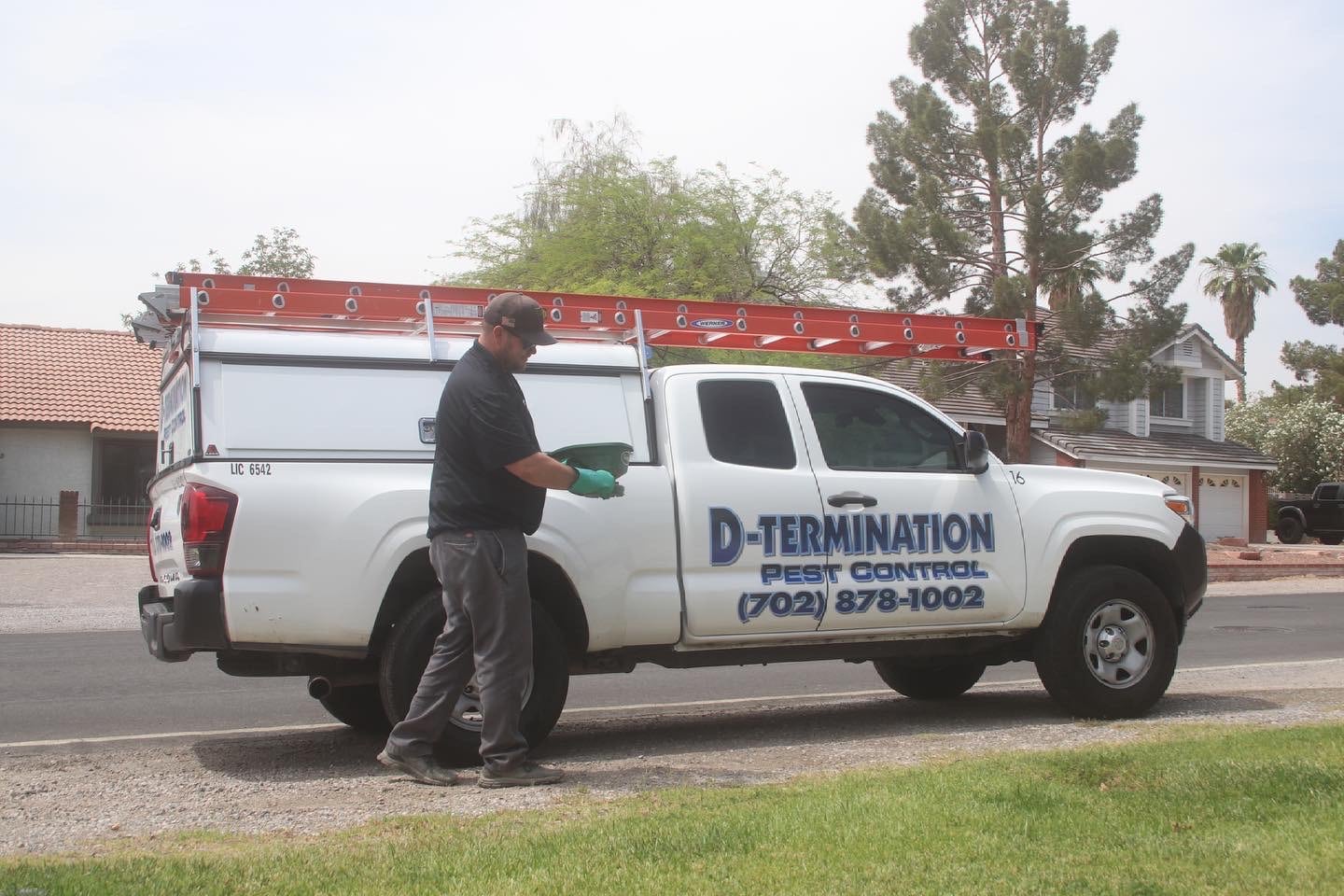
If pigeon problems are troubling you, look no further than D-Termination. Our skilled team specializes in pigeon deterrence and the revitalization of cleanliness and integrity in your space. Bid farewell to pigeons by opting for D-Termination’s highly effective pest control today!
Contact us at 702-919-6310 or visit dtermination.com to schedule your pigeon control service and regain your space from these unwelcome pests.
Frequently Asked Questions:
Provide shelter and warmth, like heated perches, to keep pigeons warm in winter.
Domestic pigeons may struggle to survive in the wild due to their dependence on humans.
Yes, pigeons can get hypothermia if exposed to extremely cold temperatures.
Pigeons are comfortable in a temperature range of about 50 to 75 degrees Fahrenheit (10 to 24 degrees Celsius).

